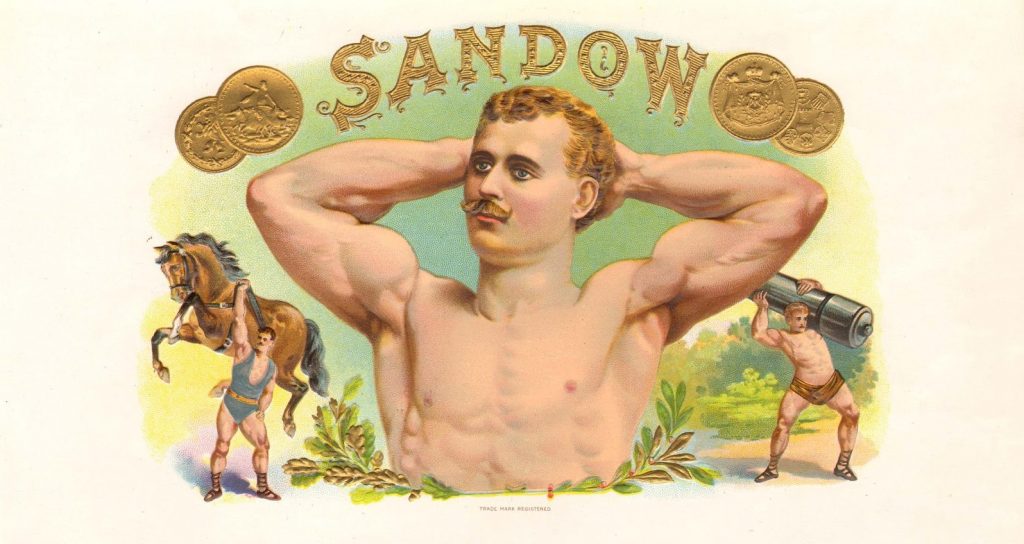Excerpts and curios from around the web:
“Manly health! Is there not a kind of charm—a fascinating magic in the words?” Such were the musings of Mose Velsor in a thirteen-part series for The New York Atlas in 1858 that have since been attributed to Walt Whitman. Writes Jennifer Schuessler for the New York Times, “Whitman’s words, part of a nearly 47,000-word journalistic series called ‘Manly Health and Training,’ were lost for more than 150 years, buried in an obscure newspaper that survived only in a handful of libraries. The series was uncovered last summer by a graduate student, who came across a fleeting reference to it in a digitized newspaper database and then tracked down the full text on microfilm.” The Walt Whitman Quarterly Review is publishing the series in its entirety. Readers can expect such topics as “The Great American Evil—Indigestion,” “Manly Beauty—The True Ambition,” and “Medicines—Do They Do Any Good?”
Speaking of ambition, a new book out from theoretical cosmologist Janna Levin, Black Hole Blues and Other Songs from Outer Space, explores the rifts and grudges that unfolded behind the scenes in the hundred-year search for gravitational waves.  The story starts a billion years ago with colliding black holes, and winds its way toward the scientist Joseph Weber, a pioneer in gravitational wave detection. Writes Michael Brooks in a review for the New Statesman: “[Weber] was ousted from the endeavor after becoming so desperate to find the waves that he abandoned scientific caution and restraint. Embarrassed colleagues distanced themselves; Weber became so isolated that when he slipped on ice in front of the gravity research building in Maryland, two days passed before he was found. He never recovered: eight months later, he was dead.” Then there’s “lone wolf” Ronald Drever, who was bricked out of his own office, and Robbie Vogt, the Nazi-prison camp survivor who did the bricking. Nevertheless, “Everyone retains their dignity. It is hard to imagine that a better narrative will ever be written about the behind-the-scenes heartbreak and hardship that goes with scientific discovery.”
The story starts a billion years ago with colliding black holes, and winds its way toward the scientist Joseph Weber, a pioneer in gravitational wave detection. Writes Michael Brooks in a review for the New Statesman: “[Weber] was ousted from the endeavor after becoming so desperate to find the waves that he abandoned scientific caution and restraint. Embarrassed colleagues distanced themselves; Weber became so isolated that when he slipped on ice in front of the gravity research building in Maryland, two days passed before he was found. He never recovered: eight months later, he was dead.” Then there’s “lone wolf” Ronald Drever, who was bricked out of his own office, and Robbie Vogt, the Nazi-prison camp survivor who did the bricking. Nevertheless, “Everyone retains their dignity. It is hard to imagine that a better narrative will ever be written about the behind-the-scenes heartbreak and hardship that goes with scientific discovery.”
Roundabout two hundred years ago, Mount Tambora in Indonesia erupted in a fury of volcanic ash that would affect the entire planet. During this time of lowered temperatures and dim light, Lord Byron (also influenced by personal crises) wrote a deeply depressing poem called, naturally, “Darkness”—a piece with more references to misery and decay than an anguish anthem by Slipknot. Nina Martyris deconstructs the poem for Lapham’s Quarterly, writing, “In this inglorious new world, the order of nature is overturned. Using fearful imagery plucked straight from the Book of Revelation, he describes predators that have become ‘tame and tremulous,’ while ‘hissing, but stingless’ vipers are slain for food. As the ‘pang of famine fed upon all entrails,’ even dogs have begun to attack their masters. The earth has shrunk into a ‘seasonless, herbless, treeless, manless, lifeless’ lump, and sailor-less ships are ‘rotting on the sea’—a potent image of paralysis no doubt taken from Coleridge’s Rime of the Ancient Mariner.”
During this time of lowered temperatures and dim light, Lord Byron (also influenced by personal crises) wrote a deeply depressing poem called, naturally, “Darkness”—a piece with more references to misery and decay than an anguish anthem by Slipknot. Nina Martyris deconstructs the poem for Lapham’s Quarterly, writing, “In this inglorious new world, the order of nature is overturned. Using fearful imagery plucked straight from the Book of Revelation, he describes predators that have become ‘tame and tremulous,’ while ‘hissing, but stingless’ vipers are slain for food. As the ‘pang of famine fed upon all entrails,’ even dogs have begun to attack their masters. The earth has shrunk into a ‘seasonless, herbless, treeless, manless, lifeless’ lump, and sailor-less ships are ‘rotting on the sea’—a potent image of paralysis no doubt taken from Coleridge’s Rime of the Ancient Mariner.”
Margaret Atwood’s dystopic novel The Handmaid’s Tale is being adapted into a ten-episode drama by Hulu scheduled to debut in 2017.  Said Atwood, who signed on as a consulting producer: “The Handmaid’s Tale is more relevant now than when it was written, and I am sure the series will be watched with great interest. I have read the first two scripts and they are excellent; I can hardly wait to see the finished episodes.” In a piece last year for the Atlantic, Sophie Gilbert analyzed the novel’s previous adaptation (released in 1990 with a script by Harold Pinter) and noted the film “pleased neither Atwood’s fans nor moviegoers, opting for a sensationalist, stylized rendition of religious fascism at work. Since then, a number of Atwood’s imaginings (themselves ripped from American history) have manifested in reality, prompting the question of what insight might be gained from a new, more faithful Handmaid’s Tale.”
Said Atwood, who signed on as a consulting producer: “The Handmaid’s Tale is more relevant now than when it was written, and I am sure the series will be watched with great interest. I have read the first two scripts and they are excellent; I can hardly wait to see the finished episodes.” In a piece last year for the Atlantic, Sophie Gilbert analyzed the novel’s previous adaptation (released in 1990 with a script by Harold Pinter) and noted the film “pleased neither Atwood’s fans nor moviegoers, opting for a sensationalist, stylized rendition of religious fascism at work. Since then, a number of Atwood’s imaginings (themselves ripped from American history) have manifested in reality, prompting the question of what insight might be gained from a new, more faithful Handmaid’s Tale.”
ICYMI: Catherine Nichols makes the case for adaptive characters being at the root of what makes a novel addictive, drawing on the works of Charlotte Brontë and Jane Austen for support.  As she writes for Jezebel: “Adaptation is a kaleidoscopic way of understanding human nature, and a novelistic technique for showing that character isn’t fixed. In real life, people change constantly, depending on who’s in the room, or what they’ve each understood of the others’ nature and mood. … The adaptation technique isn’t just an efficient way of telegraphing psychological depth; it hits the reader like rock n’ roll. It doesn’t have to be done at the level of genius to be incredibly catchy and exciting, but there’s no ceiling to its potential for complexity or connection to the audience. It’s often used for romantic pairs, but that’s not the only possibility. Contrary to its reputation as Shakespearean, I think Breaking Bad draws heavily on the adaptation technique. It’s in Gone With the Wind, Harry Potter, Twilight and the Hunger Games. I don’t think it’s a coincidence all those books have found massive popularity and obsessive followings. It makes books feel addictive. It lets us read the intentions of non-point-of-view characters naturally, the way we read actual people.”
As she writes for Jezebel: “Adaptation is a kaleidoscopic way of understanding human nature, and a novelistic technique for showing that character isn’t fixed. In real life, people change constantly, depending on who’s in the room, or what they’ve each understood of the others’ nature and mood. … The adaptation technique isn’t just an efficient way of telegraphing psychological depth; it hits the reader like rock n’ roll. It doesn’t have to be done at the level of genius to be incredibly catchy and exciting, but there’s no ceiling to its potential for complexity or connection to the audience. It’s often used for romantic pairs, but that’s not the only possibility. Contrary to its reputation as Shakespearean, I think Breaking Bad draws heavily on the adaptation technique. It’s in Gone With the Wind, Harry Potter, Twilight and the Hunger Games. I don’t think it’s a coincidence all those books have found massive popularity and obsessive followings. It makes books feel addictive. It lets us read the intentions of non-point-of-view characters naturally, the way we read actual people.”
Image: Postcard of Eugen Sandow, the “Father of Modern Bodybuilding.”




